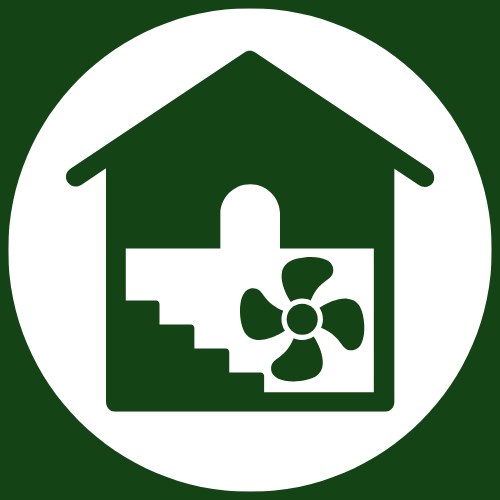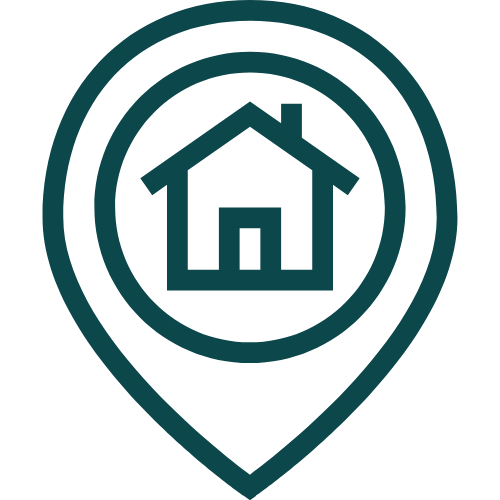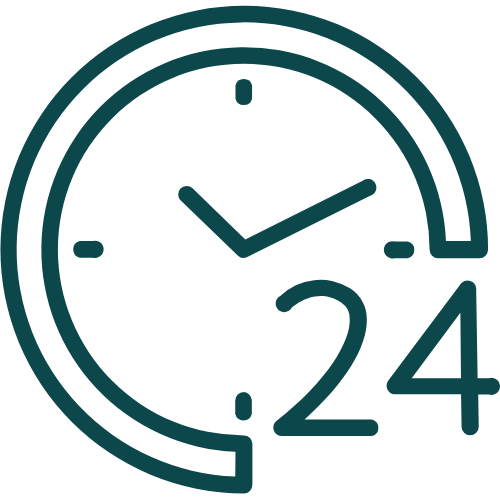Radon

Radon Testing
starting at $175
same-day scheduling!
Radon Mitigation
starting at $995

Radon Testing FAQs
Radon Mitigation FAQs
What is radon?
Radon is a colorless, odorless, tasteless, radioactive gas that is produced from the decay of naturally occurring uranium in the soil. Risk occurs when this gas enters buildings and the decay products are breathed in. These decay products can damage the lungs and cause lung cancer.
Where is radon found?
Radon can be found anywhere. Outdoor levels are usually very low, but indoor levels can be very high. It doesn’t matter where you live, how old your home is, or what type of foundation it has. The only way to know the level of radon gas in a home is to perform a test.
How does radon enter the home?
Radon gas rises up through the soil. The air pressure inside your home or office is usually much lower than pressure in the soil around the foundation. This difference in pressure causes the building to act like a vacuum, drawing radon in through foundation cracks, construction joints, gaps around service pipes or wires, sump pits and other openings.
It doesn’t matter what type of foundation your home has or how recently your home was built, radon can get inside.
What is radon testing?
Radon testing is like a wellness check for your home’s air.
Radon is an invisible, odorless gas that naturally seeps from the ground and can accumulate indoors without any obvious signs. You won’t see it, smell it, or taste it, so the only way to know if it’s there is through testing. The good news? If levels are high, mitigation is straightforward and effective.
How long does radon testing take?
Radon testing take 48 hours after the placement of the test within the home. Once the monitor is picked up by our technician, the report is sent to you within 24 hours, keeping up the pace with real estate transactions!
Is it safe to test for radon?
It is 100% safe to test for radon. The monitors themselves do not collect radon, and the testing process does not “stir-up” radon for you to then breath. The testing equipment has one job, collect air samples from your home to measure radon levels.
I'm already getting a home inspection, will radon testing be included?
If you’re buying a home, a radon test should be high on your to-do list during the due diligence period. Your home inspection company should be able to provide this service or recommend you a radon testing company to get this extremely important step rolling. Riverside Environmental prides itself on fitting into the tight deadlines of real estate, so don’t worry about the tight timeline. Tennessee does not currently require radon testing for real estate transactions. However, both the EPA and the Tennessee Department of Environment and Conservation recommend radon testing. Just go ahead and make sure it’s done with your home inspection!
How often should you test for radon?
Test at least every two years—think of it as your home’s regular check-up.
But don’t wait if you’ve never tested before, made major renovations (new windows, HVAC, foundation work), or you recently installed a radon mitigation system. You want to make sure the system is running correctly! Radon levels can change with the seasons, so routine testing helps you stay protected year-round.
Do radon tests have cameras?
No!
We will be placing the tests at the lowest level of living space, and we try to place in a corner of that room. There is absolutely no other data being collected besides radon particles in the air. There are no cameras, audio recording, or motion sensor devices within the testing equipment.
What is a radon mitigation system?
A radon mitigation system is a set of equipment and methods designed to lower radon levels inside a building. These systems work by venting radon gas from the soil beneath the structure to the outside air, stopping it from building up indoors. The most common approach, called sub-slab depressurization, uses a fan and venting system to pull radon out from under the foundation and safely release it outdoors.
How do I know if I need a mitigation system?
Radon is invisible and odorless, so if you’re asking, so the answer is a definite yes.
The only way to know if your home has elevated levels is to test. Once the test is completed, you will know the home’s average radon level, and then you’ll know if the levels are elevated to the point of recommended mitigation.
What if my home already has a radon mitigation system?
Homes with a properly installed and working radon mitigation system are considered safe.
These systems are designed to keep radon levels below the EPA’s action level of 4.0 pCi/L, significantly reducing health risks. Most use a vent pipe and fan to pull radon from beneath the home and safely release it outside, preventing it from building up indoors.
Many systems also include monitoring features to ensure everything stays in check. To keep your system effective, make sure it’s professionally installed, maintained regularly, and tested every few years, especially here in Middle Tennessee.
Does a radon mitigation system decrease the value of a home?
No, radon mitigation doesn’t hurt a home’s value, in fact, it often adds to it.
In radon-prone areas like Nashville and Middle Tennessee, having a mitigation system already in place can be a major selling point. It signals that the issue has been handled and offers peace of mind to buyers (plus, it saves them the cost of installation).
Where do concerns sometimes pop up? Occasionally, buyers unfamiliar with radon may assume the system means there’s a lingering issue. That’s where education helps. Explaining that the system is a proactive safety feature, not a red flag. Also, if the system is installed poorly or in a highly visible area, it could impact aesthetics. That’s why using experienced professionals ensures a clean, low-profile install that won’t detract from your home’s appearance.
How much does it cost to run the system?
The annual cost to run a radon mitigation system is typically very low, ranging from $60-$1000 per year. This is because radon mitigation systems use energy-efficient fans that consume a small amount of electricity, similar to a light bulb.
How often should you test for radon with a system?
Test at least every two years.
You want to make sure the system is running correctly! Radon levels can change with the seasons, so routine testing helps you stay protected year-round. It’s also important to test after major renovations (new windows, HVAC, foundation work).
Can I be in the home during the install?
Absolutely!
As with all home installations, as long as you give us proper access and room to work, radon mitigation can occur with you in the home.
Do radon mitigation systems have cameras?
No!
The radon mitigation system will have a fan, gathering radon infused air from below your home and blowing it safely above the home. No monitoring equipment is within the mitigation system.
Riverside Environmental protects Middle Tennessee families, home buyers, and sellers from the hidden danger of radon. Our results stay 100% unbiased and fully compliant with EPA, NRPP, and Tennessee Radon Control standards.
What Makes Us Different

Certified Precision
Every test is set, retrieved, and analyzed by a credentialed Radon Measurement Professional.

Local Expertise
We understand the soils, foundations, and building styles unique to Middle Tennessee.

Same-Day Reports
Results arrive minutes after the 48-hour test ends, so transactions keep moving.
Why Radon Testing Matters
A documented radon report is more than a health check, it’s a powerful negotiation tool. Buyers can request seller-paid mitigation or credits, while sellers who test early can market a “radon-safe” home with confidence.
